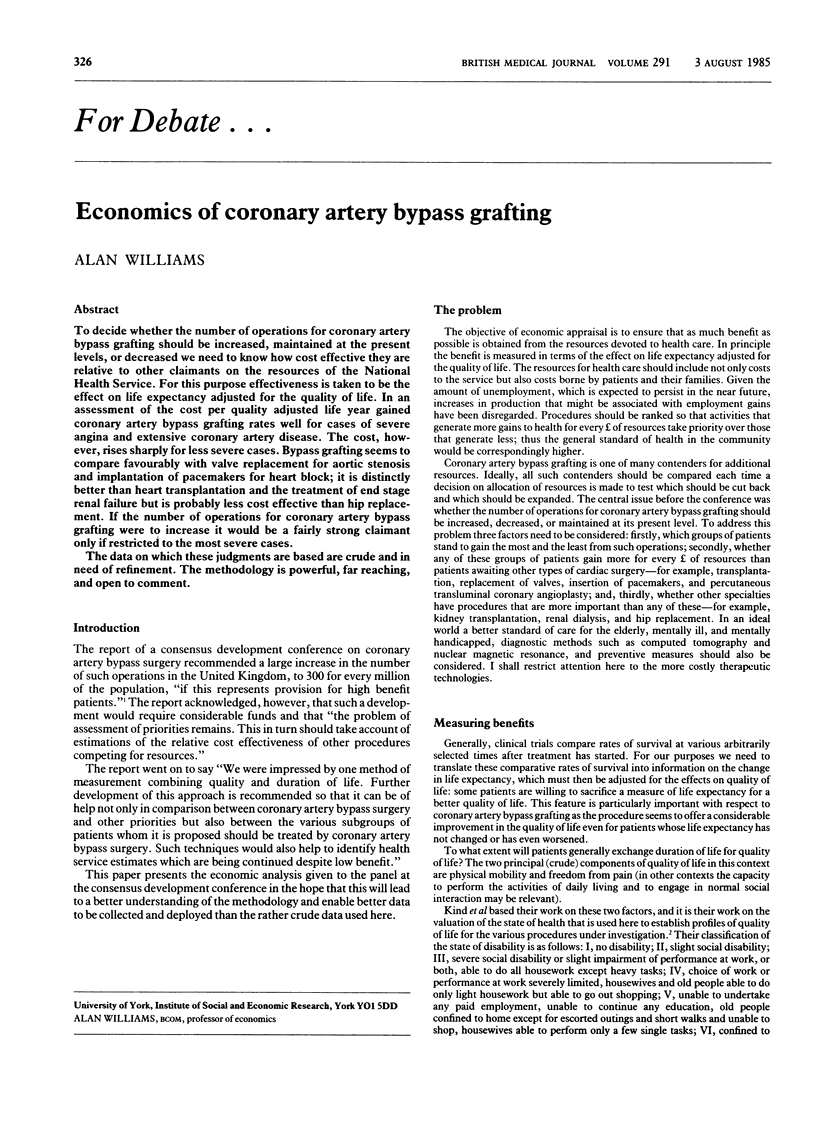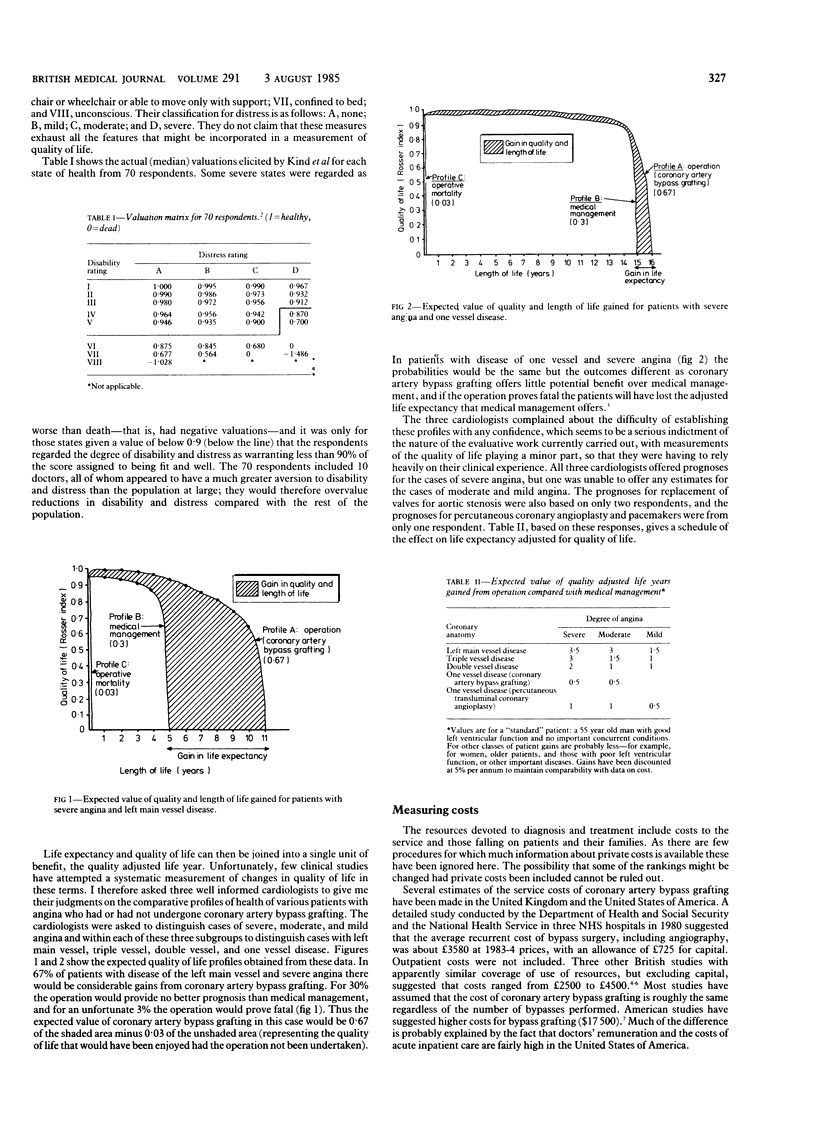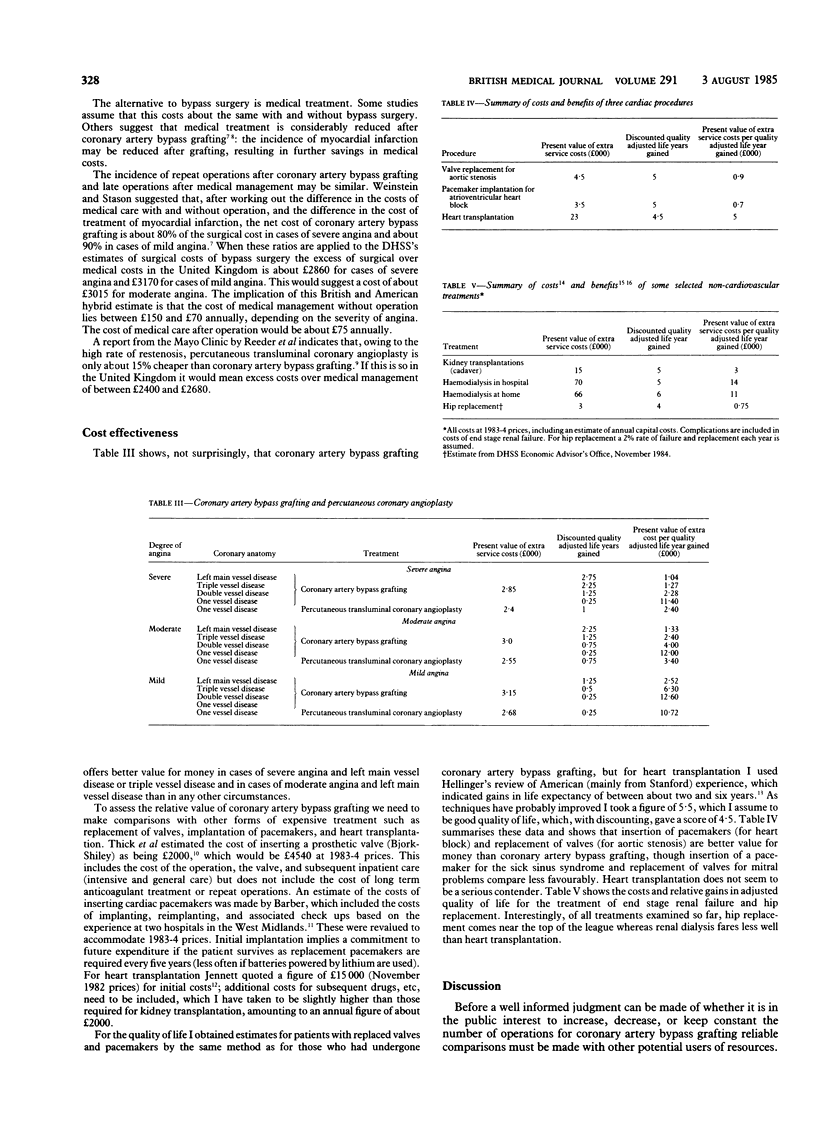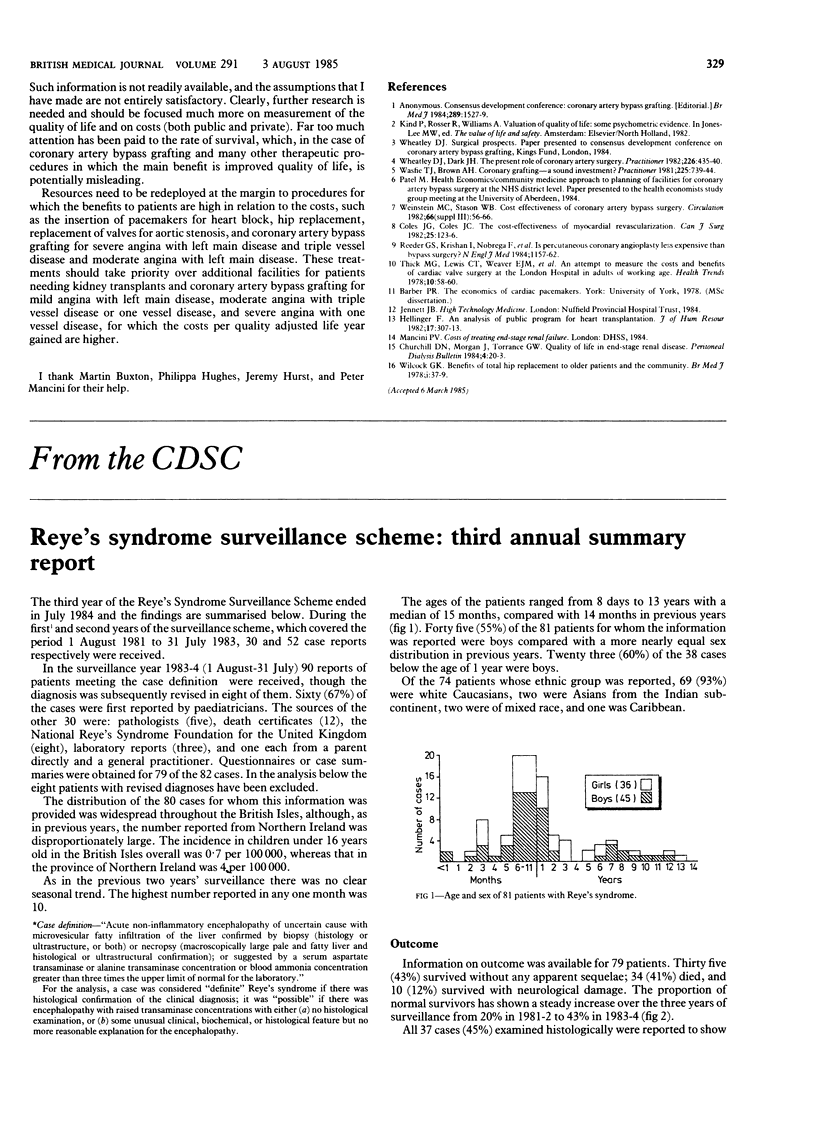Abstract
To decide whether the number of operations for coronary artery bypass grafting should be increased, maintained at the present levels, or decreased we need to know how cost effective they are relative to other claimants on the resources of the National Health Service. For this purpose effectiveness is taken to be the effect on life expectancy adjusted for the quality of life. In an assessment of the cost per quality adjusted life year gained coronary artery bypass grafting rates well for cases of severe angina and extensive coronary artery disease. The cost, however, rises sharply for less severe cases. Bypass grafting seems to compare favourably with valve replacement for aortic stenosis and implantation of pacemakers for heart block; it is distinctly better than heart transplantation and the treatment of end stage renal failure but is probably less cost effective than hip replacement. If the number of operations for coronary artery bypass grafting were to increase it would be a fairly strong claimant only if restricted to the most severe cases. The data on which these judgments are based are crude and in need of refinement. The methodology is powerful, far reaching, and open to comment.
Full text
PDF



Selected References
These references are in PubMed. This may not be the complete list of references from this article.
- Coles J. G., Coles J. C. The cost-effectiveness of myocardial revascularization. Can J Surg. 1982 Mar;25(2):123–126. [PubMed] [Google Scholar]
- Hellinger F. J. An analysis of a public program for heart transplantation. J Hum Resour. 1982 Spring;17(2):307–313. [PubMed] [Google Scholar]
- Wasfie T. J., Brown A. H. Coronary grafting--a sound investment? Practitioner. 1981 May;225(1355):739–744. [PubMed] [Google Scholar]
- Wheatley D. J., Dark J. H. The present role of coronary artery surgery. Practitioner. 1982 Mar;226(1365):435-8, 440. [PubMed] [Google Scholar]


